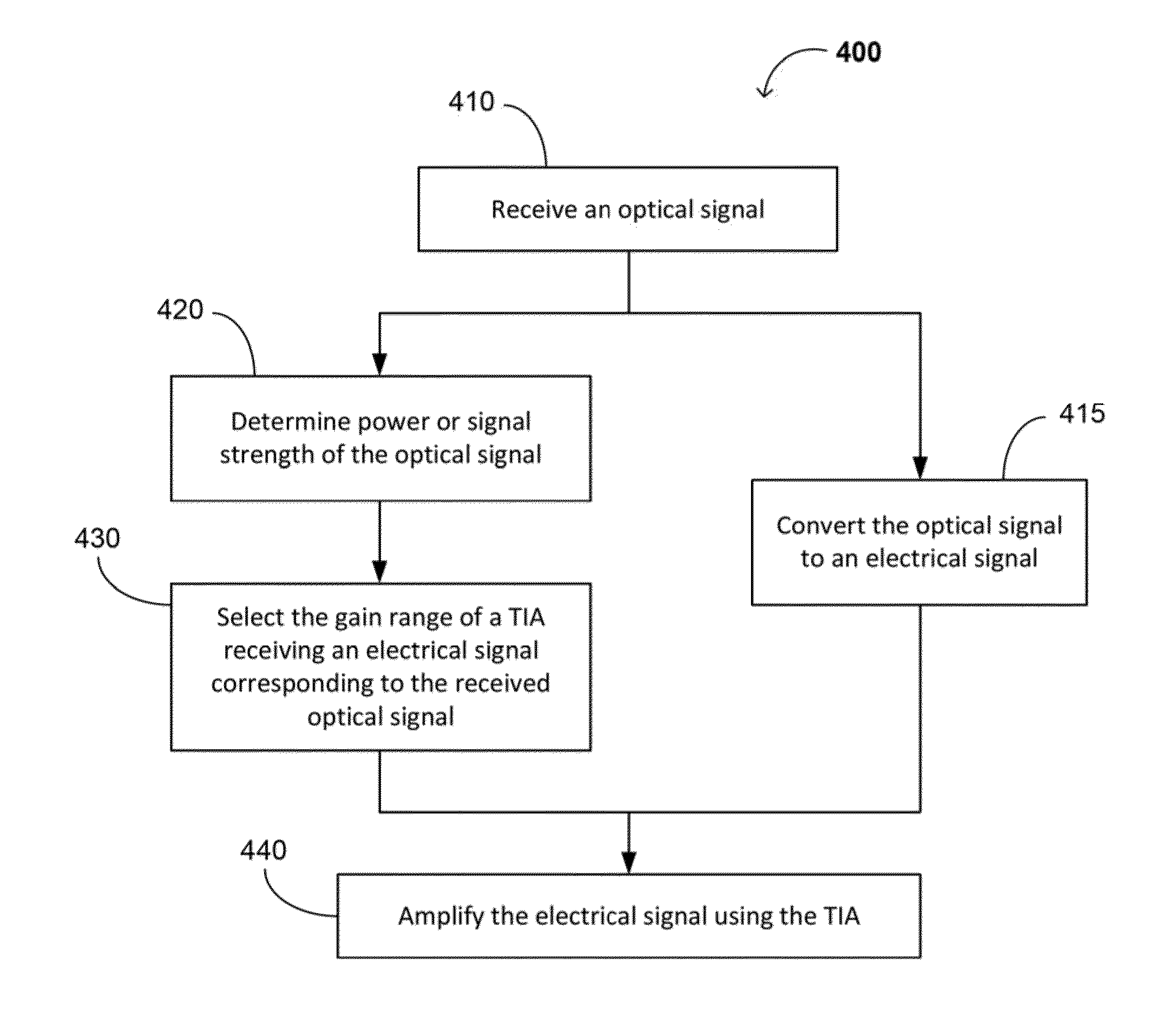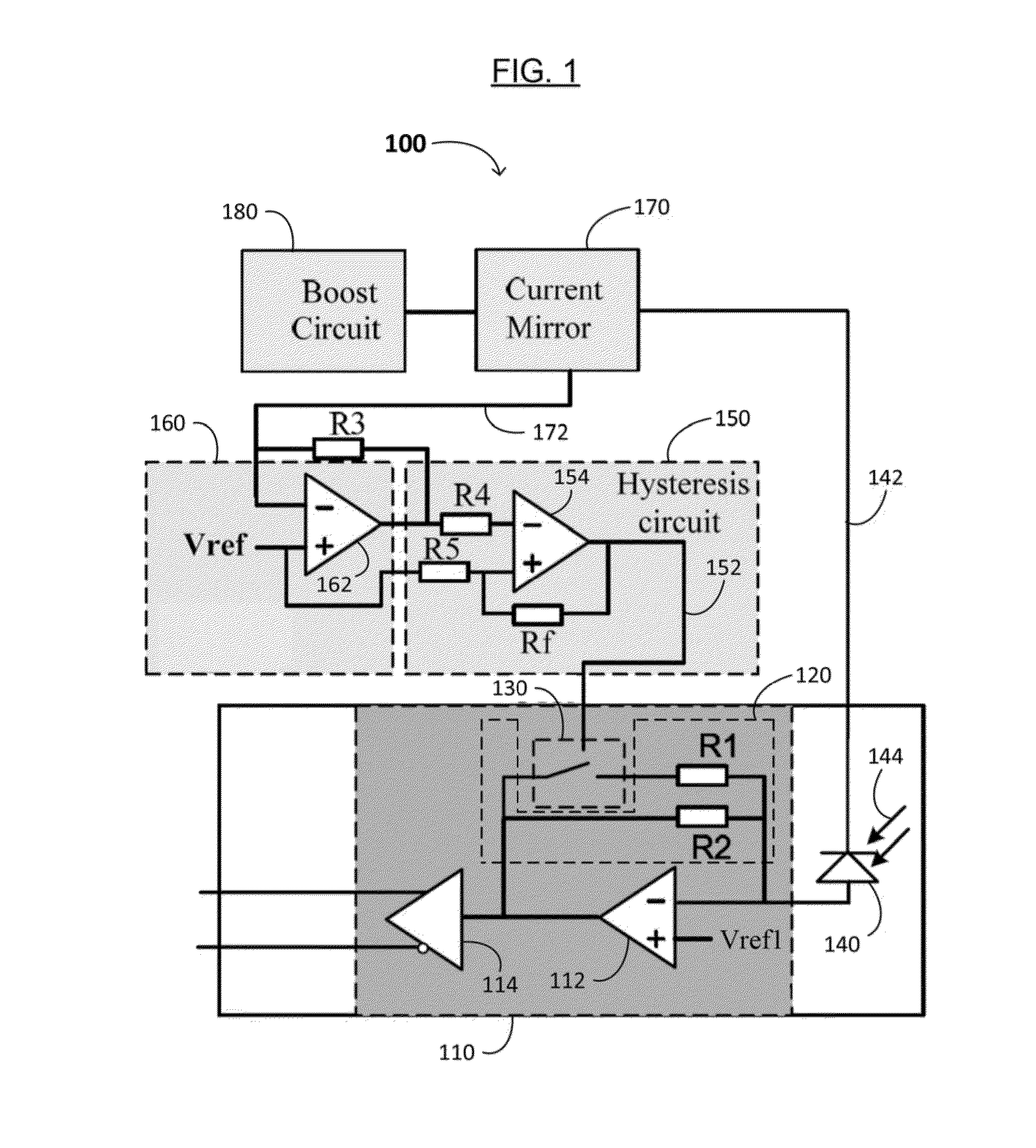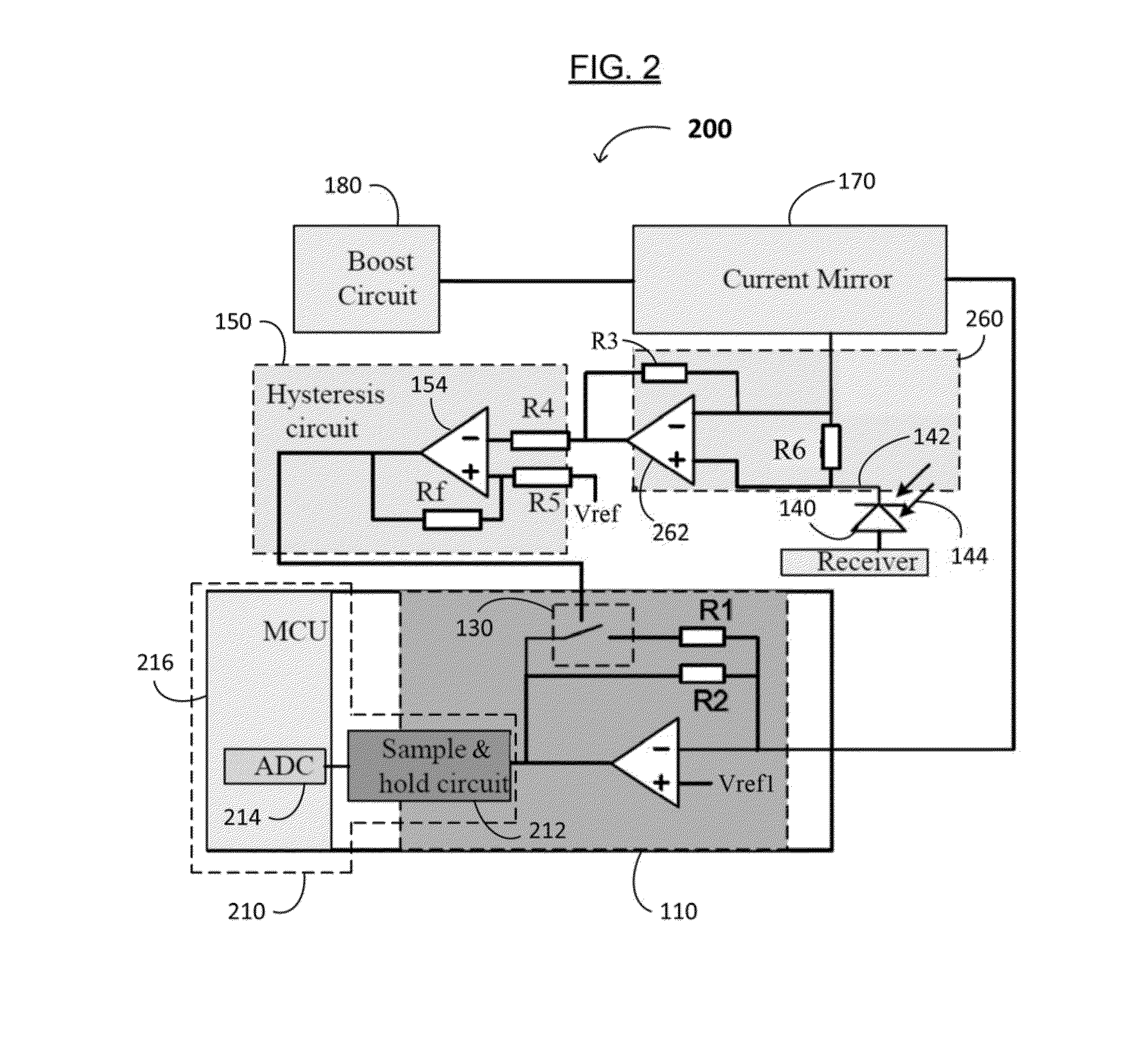Transimpedance Amplifier (TIA) Having an Enlarged Dynamic Range and Optical Devices Using the Same
- Summary
- Abstract
- Description
- Claims
- Application Information
AI Technical Summary
Benefits of technology
Problems solved by technology
Method used
Image
Examples
first embodiment
A First Embodiment
[0024]As shown in FIG. 1, an optical receiver 100 includes a TIA 110 having an improved dynamic range may include a current amplifier 112, an impedor 120, and a switch 130. The TIA 110 may further comprise a buffer 114 receiving an output of the current amplifier 112. In one embodiment, the buffer 114 is or comprises a differential output buffer (e.g., as shown), but which may also be or comprise a conventional single-ended buffer (i.e., providing a single-ended output signal, as opposed to a differential output signal). The TIA 100 is particularly useful in optical or optoelectronic devices, such as optical receivers and optical transmitters.
[0025]The current amplifier 112 has a reference voltage input terminal, a second input terminal, and an output terminal. The current amplifier 112 is configured to produce an amplified current (e.g., at the output terminal) from a received bias current. In one example, the bias current is provided by a photodiode 140, which co...
second embodiment
A Second Embodiment
[0035]FIG. 2 shows an optical receiver 200, comprising a RSSI circuit 210 and the TIA 110 of FIG. 1. The optical receiver 200 may further include the hysteresis circuit 150. Since optical signals from other optical transmitters in the network may have any of a wide range of signal strengths (e.g., from −6 dBm to −34 dBm, from −8 dBm to −22 dBM, etc.), the RSSI circuit 210 should advantageously have good sensitivity over a wide range of signal strengths. When the optical input power is less than a medium threshold (such as −18 dBm), the amplifier should have a high gain (in which case the switch 130 may be off). Such a configuration is very helpful for ADC sampling, and provides improved accuracy (e.g., which is useful for an RSSI monitor). However, when the optical input power is higher than the medium threshold, especially in an overload range or section (such as at or near −6 dBm), the amplifier (e.g., amplifier 112 in FIG. 1) is saturated, so it is difficult fo...
PUM
 Login to View More
Login to View More Abstract
Description
Claims
Application Information
 Login to View More
Login to View More - R&D
- Intellectual Property
- Life Sciences
- Materials
- Tech Scout
- Unparalleled Data Quality
- Higher Quality Content
- 60% Fewer Hallucinations
Browse by: Latest US Patents, China's latest patents, Technical Efficacy Thesaurus, Application Domain, Technology Topic, Popular Technical Reports.
© 2025 PatSnap. All rights reserved.Legal|Privacy policy|Modern Slavery Act Transparency Statement|Sitemap|About US| Contact US: help@patsnap.com



